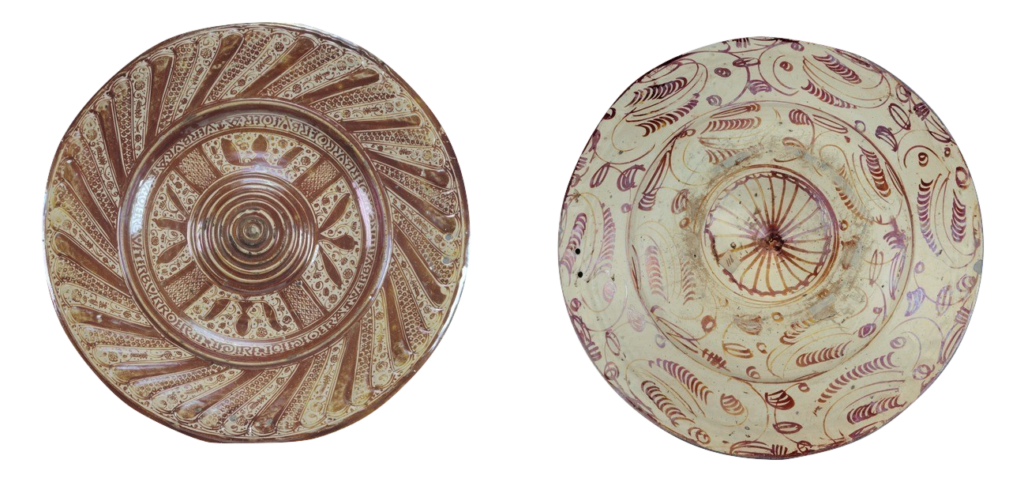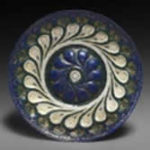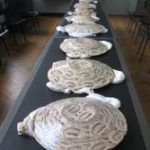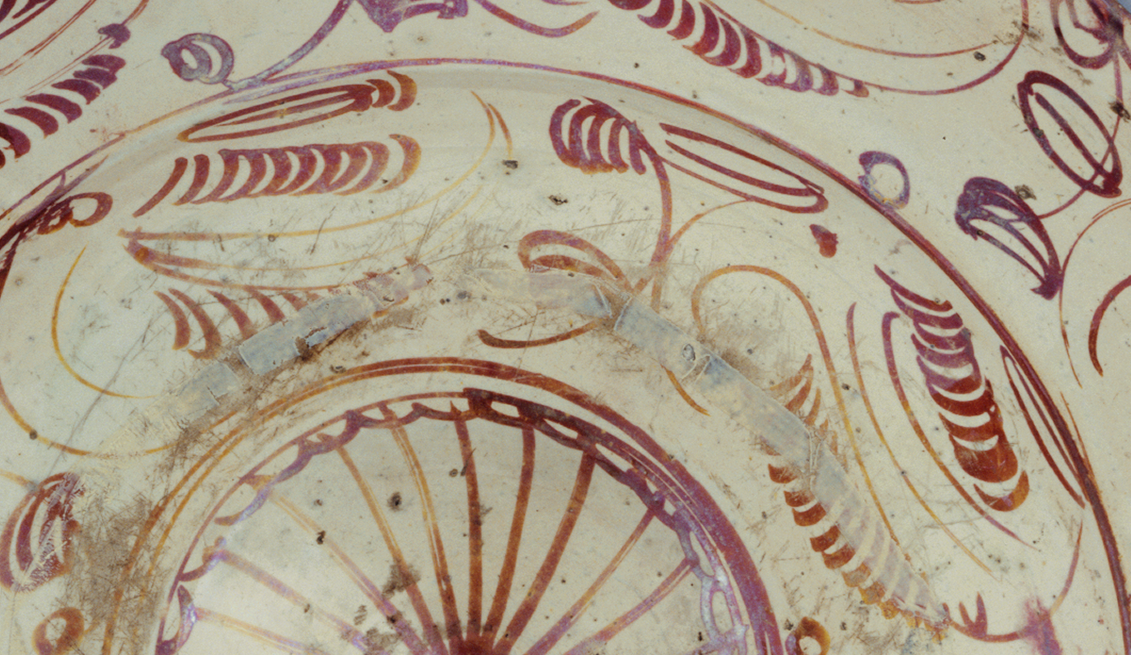The design and decoration of Valencian lustreware reflect the region’s complex Islamic and Christian history. Much of the lustred decoration, like the technique itself, recalls the earlier Islamic ceramics of Spain, while the shape of many of the wares is European. Large dishes like these (this one measures 47.5cm in diameter) were made on an almost mass scale. Decorative motifs are fairly standard, consisting in stylized plants, geometrical ornament, and often including animals and coats of arms. True coats of arms are an important aid in the dating of pieces but many are untraceable and are purely aesthetic.
The ‘gadrooned’ pattern around the edge of this dish, is one of the most frequently recurring moulded designs on Spanish lustreware dishes of this period, as seen here in two examples from the Victoria & Albert Museum, London. The shape is not indigenous to Spain and is commonly found in Italian and European metalwork of the period. It was likely introduced to the potters of the area by the Italian merchants who exported these wares to clients across Europe.
The dish has two holes near the rim; careful looking reveals that the tin glaze which covers the surface also runs down into the holes, proving they were made before firing. All Spanish lustreware dishes have one or two holes, indicating they were suspended – either for storage or display. It is likely however that once exported to Italy such dishes could have been displayed differently, on a stepped piece of furniture, or credenza.

Around the well of the dish is an inscription in Latin, referring to the first line of the Gospel of John: ‘IN PRINCIPIO ERAT VERBUM’ (‘In the Beginning was the Word’). The phrase makes a striking decorative addition to the dish, which evokes both its Christian patronage and its Islamic heritage. Calligraphic inscriptions are an important legacy of the artistic traditions of Islamic Spain. Although the spelling here is faulty, the inscription is complete and legible. Many similarly positioned inscriptions, such as the one on a dish at the Victoria & Albert Museum, are much more difficult to decipher and many are purely decorative and totally lacking in meaning.
As with all Valencian dishes, the reverse is freely painted in lustre, here in a simplified floral design, strongly suggesting the dishes were designed to be seen from both sides.
Back to Spanish Lustre Dish





